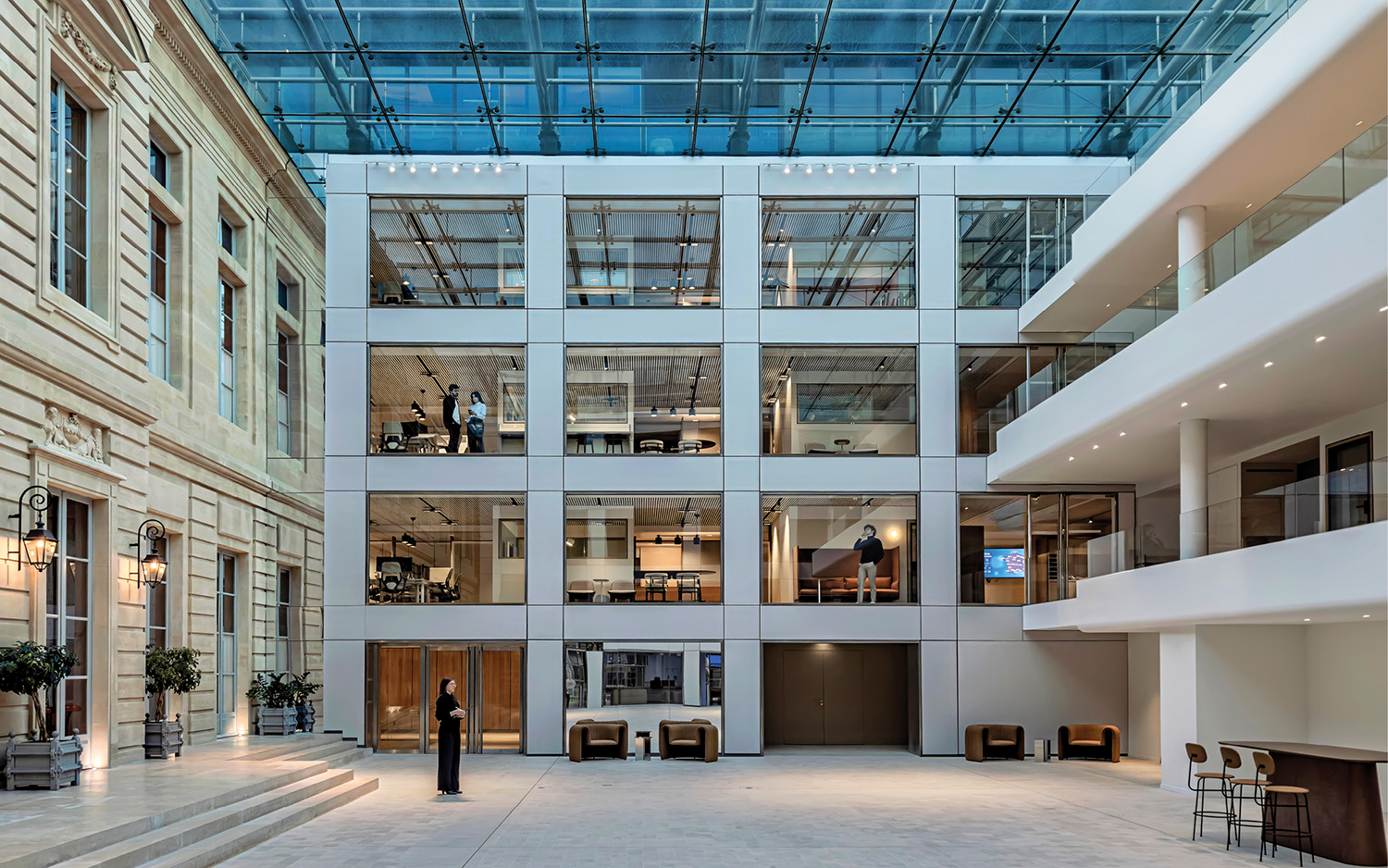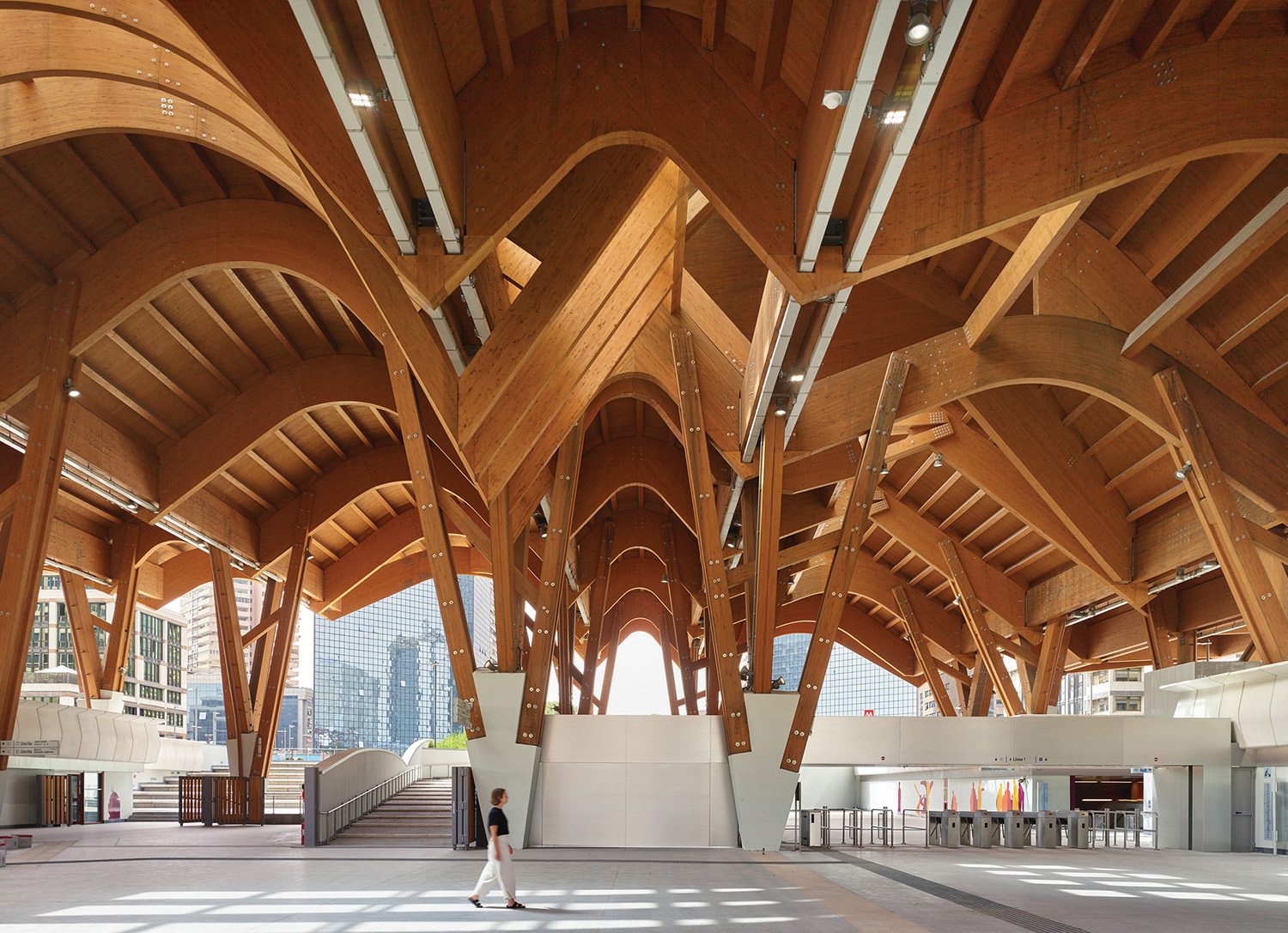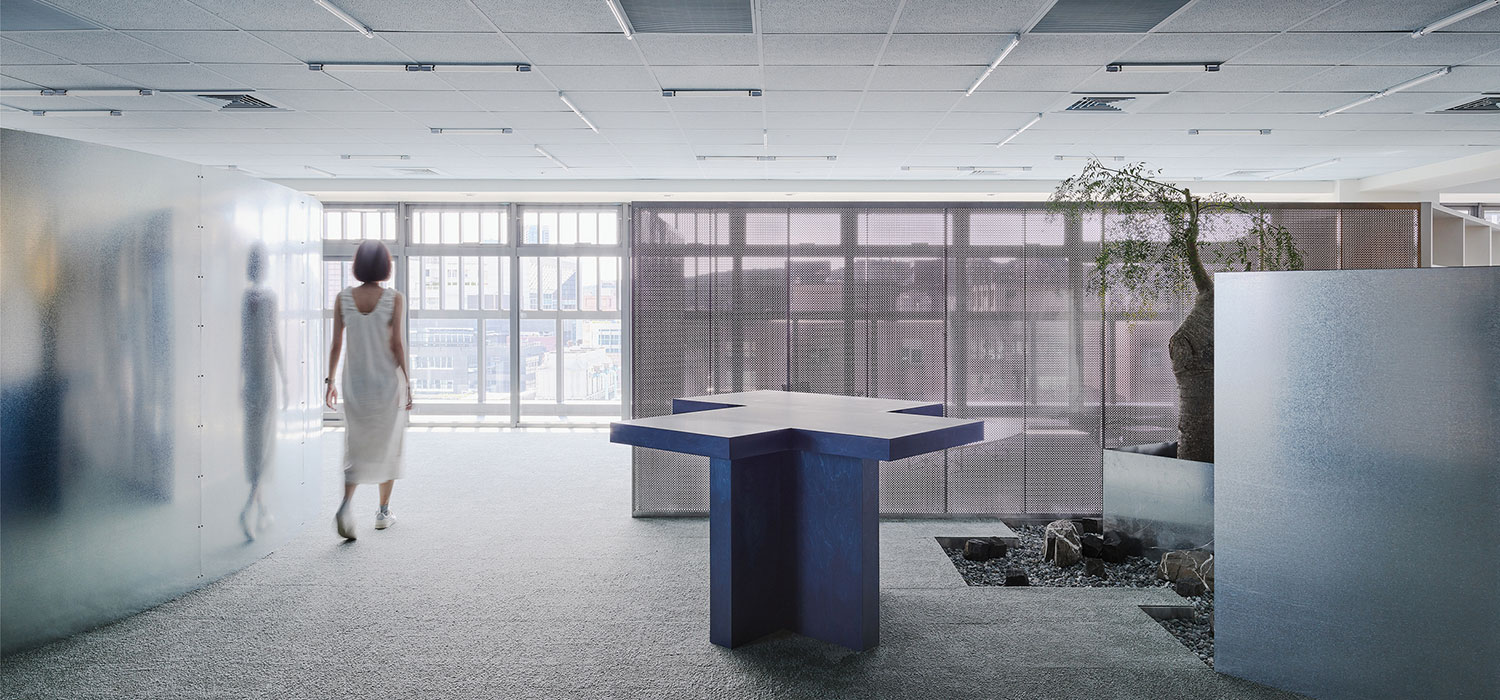A Fresh Take: Joe Fresh’s Manhattan Flagship
Joe Fresh has come a long way in six short years—both financially and architecturally. The affordably priced fashion label, now Canada’s top seller, debuted in a shop-in-shop at a Loblaws supermarket, of all places. Customers could drop by for dinner fixings and walk out with a tulip skirt or an oxford shirt, too. Stand-alone boutiques quickly followed. Now there’s a flagship in an International Style glass-box landmark in Midtown: a Manufacturers Trust Company bank designed in 1954 by a young Gordon Bunshaft of Skidmore, Owings & Merrill.
If that trajectory sounds unlikely, consider the company’s progenitor. Joe Fresh is the brainchild of Joe Mimran, the founder of Club Monaco and something of a fashion-marketing savant. Not to mention a dream client for Burdifilek creative partner Diego Burdi and managing partner Paul Filek, who will have soon completed 14 Joe Fresh locations across Canada and the U.S. “Joe knows how to talk to designers—he has the lingo down,” Burdi says. “He also has an infinite appreciation for the arts.” Which meant he understood the Bunshaft building’s significance and potential. As Mimran himself explains, “It offered a unique opportunity to do something both commercially viable and artistically sensitive.”
Commercial viability and artistic sensitivity at the 17,800-square-foot bilevel site were, in fact, the key issues in an acrimonious debate now fortunately resolved by preservationists, the Vornado Realty Trust, and JPMorgan Chase & Co., the bank that had ultimately absorbed the assets of the Manufacturers Trust Company—allowing Burdifilek to develop a plan that would insert merchandising elements almost surgically. These elements would have to defer to the interior’s star attractions, a massive screen and an ethereal mobile commissioned from Harry Bertoia for the bank’s lofty mezzanine, which has become the main sales floor. In addition, the dropped ceilings, unsightly ATMs, and security storefronts that had defaced Bunshaft’s majestically airy volumes, vacant for approximately a year, would have to be removed. “The main challenge was that the exterior and the interior were landmarked. It’s usually just the exterior,” Burdi says. He’s no stranger to New York preservation issues, having worked on numerous Club Monaco boutiques in listed spaces. But the limitations this time were hair-raising.
“When I found out that touching the walls, floors, and ceilings was verboten, I?was like. . . .” He throws up his arms.
A daunting prospect, but Burdifilek got some assistance from SOM, which had refurbished the interior, reestablishing original details, during the basebuilding renovation. The exact colors and matrix of the original terrazzo were replicated, the ceilings’ translucent acrylic panels replaced, and the columns’ Vermont marble claddings removed, cleaned, and einstalled. Everything from mechanicals to lighting systems needed an upgrade. “Significant effort went toward disguising infrastructure to make the space look clean again,” Burdi explains. “This was finicky work. Every reveal was considered. Less-ismore modernism leaves nowhere for imperfections to hide.”
In lieu of solid walls, freestanding modular “wardrobes,” configured in C or L shapes, define roomlike vignettes—one with the Bertoia mobile as a focal point. “The wardrobes liberated us from the traditional aisle-based plan and opened up sight lines,” Filek notes. Each white box is 10 feet high by 4 feet wide, large enough to suit the architecture’s grand scale but small enough to transport upstairs via one of the repositioned escalators. To let light fall on the merchandise inside the units, they have tops in sandblasted acrylic. The wardrobes’ deceptively simple-looking design derived from a protracted prototyping phase that explored every conceivable display functionality. “It was all about the composition, getting the right equilibrium,” Burdi says. Shelves and hang bars can be placed at multiple heights. Many of the wardrobes incorporate flat-screen monitors, full-height mirrors, or backlit billboards. Exterior surfaces, currently clad in white vinyl film, can be re-skinned in a different color. “Joe Fresh has a strong merchandising department that needs a canvas to play with,” Burdi continues. While the vinyl film lends sheen, lower display units have a matte white finish inspired by the plasterwork of Diego Giacometti.
In contrast to all the whiteness, the long cash-wrap desk is ebonized cerused oak, and behind rises the Bertoia screen in steel and brass. “Seeing it for the first time was like going to the Vatican. I spent 45 minutes just staring at it,” Burdi marvels. Inspired by its presence, Mimran adds, “We’ve set aside space for future installations and temporary exhibitions.” The current show features mannequins manufactured by Ralph Pucci International—a retrospective starting with an Andr.e Putman design from 1986 and ending with one by Pucci’s in-house team from 2007.
Equally captivating is the Fifth Avenue streetscape, which forms a sort of moving wallpaper. “When I stood on the mezzanine, on the floating floor, looking out those windows, I thought, This is the best upstairs retail space I have ever seen,” Mimran says. To the immense credit of his addictively chic merchandise, the hordes of obsessed shoppers barely seem to notice.


